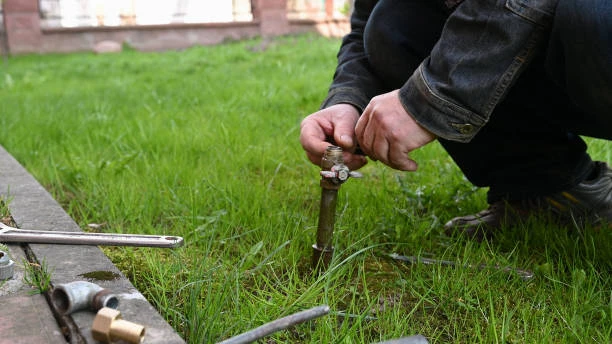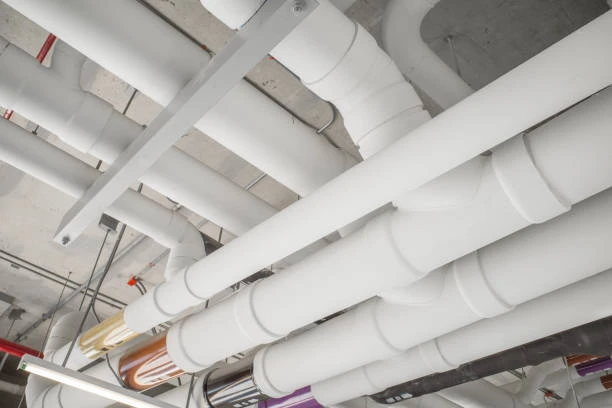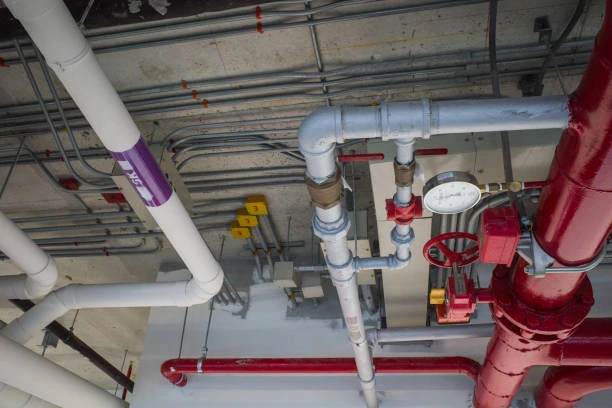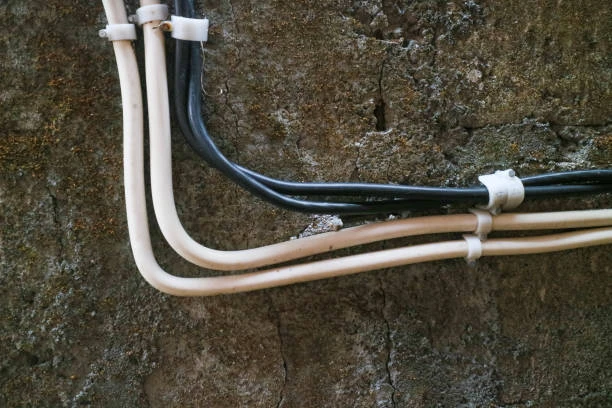Introduction: Why Copper Ball Valves Excel in Structural Stability
In the world of fluid control systems, a stable and durable valve body structure is crucial for ensuring long-term performance, leak prevention, and user safety. Among all types of valves, copper ball valves stand out for their excellent structural integrity, mechanical strength, and sealing performance. Whether used in residential plumbing or industrial settings, their design proves far superior in maintaining stability under pressure and temperature variations. Compared with options such as the pex expansion ball valve, copper valves offer a refined structure that resists deformation and leakage over time. This article explores how copper ball valves are designed for structural stability, their key features, applications, installation guidance, and how they compare with plastic-based alternatives. If you are involved in piping systems, this guide will help you understand why copper remains the trusted choice for long-term valve performance.
Frequently Asked Questions (FAQ)
1. What is a copper ball valve used for?
Copper ball valves are typically used to control the flow of water, gas, or other fluids in residential, commercial, and industrial systems. They are ideal where stable shut-off and minimal leakage are required.
2. What is the difference between a copper ball valve and a pex expansion ball valve?
A copper ball valve features a metal body and ball mechanism, offering better heat resistance and structural strength, while a pex expansion ball valve uses plastic materials and is more suitable for quick-fit, lower-temperature systems.
3. Can copper ball valves be used in high-pressure systems?
Yes. Copper ball valves are designed to withstand high pressures and temperature fluctuations, making them suitable for both hot and cold water lines.
4. Are copper ball valves easy to install?
With the right tools and knowledge, copper ball valves are relatively easy to install. Soldered, threaded, or compression fittings are commonly used depending on the system.
5. Do copper ball valves corrode over time?
Copper and brass valves are naturally corrosion-resistant, especially when used in clean water systems. They also resist scale build-up, maintaining performance over time.
What Are Copper Ball Valves? Definition and Structural Features
The structure includes a body, stem, handle, seals, and the internal ball. When the handle turns, the ball rotates to open or block the passage inside the valve.
Key Structural Features:
Durable Valve Body
Copper valves feature a thick-walled valve body that resists cracking, distortion, and mechanical fatigue.Solid Ball Mechanism
Precision-machined ball ensures smooth operation and a tight seal against PTFE seats.Anti-leakage Stem Design
High-quality stem packing prevents leaks around the handle, even under high pressure.Threaded or Soldered Ends
Available in multiple connection formats for compatibility with copper pipes or mixed-material systems.High Pressure and Temperature Tolerance
Most copper ball valves can withstand pressures up to 600 PSI and temperatures up to 200°C, making them ideal for a wide range of demanding systems.
In contrast, a pex expansion ball valve typically has a polymer body, which may expand slightly under pressure and temperature fluctuations, reducing its long-term sealing reliability.
Common Applications and Industries Using Copper Ball Valves
Copper ball valves are versatile and durable, which is why they are found in a wide variety of systems that demand stable flow control and long-term reliability.
Common Applications:
Domestic Plumbing Systems
Used for main shut-off, fixture supply lines, and outdoor taps.Hydronic Heating Systems
Control fluid flow in radiator systems, boilers, and heat exchangers.Industrial Pipelines
Used for chemical, water treatment, and air handling systems due to their chemical resistance and durability.Irrigation Systems
Provide dependable control in agricultural and garden irrigation setups.Marine and Automotive Systems
Preferred where vibration and corrosion resistance are crucial.
Unlike pex expansion ball valves, which are more commonly found in newer residential systems, copper ball valves are used across legacy and modern applications due to their adaptability and structural endurance.
Buying Guide: Choosing the Right Copper Ball Valve
When selecting a copper ball valve for your system, several important factors determine the valve’s suitability, durability, and sealing performance.
What to Consider:
Material Composition
Choose valves made of lead-free brass or DZR copper alloys for potable water safety and corrosion resistance.Size and End Connection
Ensure correct sizing (e.g., 1/2″, 3/4″, etc.) and matching connection type (solder, threaded, or compression).Full Port vs Standard Port
Full port valves allow unrestricted flow, ideal for systems where pressure drop must be minimised.Pressure Rating
Check that the valve can handle the maximum pressure of your system.Temperature Range
Copper valves work in high-temperature settings, a benefit over plastic-based valves.Handle Design and Operation
Choose ergonomic handles that offer clear indication of open/closed position and comfortable grip.Third-Party Certification
Look for valves tested and approved under ISO, ASTM, or other relevant standards.
By comparison, a pex expansion ball valve is easier to install but often lacks the high-pressure durability and long-term strength needed in industrial or hot water applications.
Installation Tips for Copper Ball Valves
A well-installed copper ball valve will offer years of maintenance-free service. Below are some installation best practices to ensure secure sealing and structural stability.
Installation Steps:
Clean and Prepare Pipe Ends
Deburr and clean copper pipe ends thoroughly before fitting. This ensures a flush connection and prevents sealing failure.Use Suitable Sealing Methods
Use PTFE tape or pipe thread sealant for threaded connections. For soldered types, ensure surfaces are clean and use a high-quality flux and solder.Avoid Over-Tightening
Tighten until secure, but avoid using excessive torque that may distort the threads or valve body.Correct Valve Orientation
Ensure the handle is positioned for easy access, and the valve is installed with consideration to system flow.Pressure Test After Installation
Always perform a leak test with air or water to verify sealing integrity before pressurising the system.
Unlike pex expansion ball valves, which often rely on a compression sleeve and expander tool, copper valves require a bit more preparation but deliver far superior structural reliability.
Copper Ball Valve vs Plastic (PEX) Valve – Comparison Table
| Feature | Copper Ball Valve | PEX Expansion Ball Valve |
|---|---|---|
| Material | Copper or brass alloy | High-grade PEX polymer |
| Heat Resistance | Excellent (up to 200°C) | Limited (up to 95°C) |
| Pressure Tolerance | High (up to 600 PSI) | Moderate (up to 160 PSI) |
| Structural Stability | Rigid, long-lasting | Flexible but less durable |
| Installation | Requires soldering/threading/compression | Easier with expansion tool |
| Flow Restriction | Minimal (full bore option) | Slight restriction in smaller sizes |
| Lifespan | 20–30 years or more | 10–20 years depending on use |
| Corrosion Resistance | High | High (in most water systems) |
| Initial Cost | Moderate | Lower |
| Suitable for High Demand Use | Yes | Limited |
While the pex expansion ball valve is ideal for quick residential applications, copper ball valves remain the better option when system stability and durability matter most.
Conclusion: The Structural Superiority of Copper Ball Valves
Copper ball valves remain an essential choice for anyone requiring strong, leak-free, and long-lasting performance in plumbing or industrial piping systems. Their superior valve body structure, precise internal components, and excellent compatibility with high temperatures and pressures make them unmatched in terms of stability.
Compared to modern options such as the pex expansion ball valve, copper valves deliver more consistent performance over time, especially in complex systems where failure is not an option. Whether you’re upgrading a domestic water system or designing a fluid network for industrial use, investing in high-quality copper valves ensures peace of mind and long-term cost savings.
Connect with IFAN
IFAN is a reliable and experienced Chinese manufacturer with over 30 years in producing plastic pipes, copper valves, and fittings. We offer a broad selection of copper fittings, copper valves, plastic pipes, and accessories to meet various project demands.
Contact Us:
- For more information,pls visit our webside https://waterpipefitting.com/
Pls Mailto: [email protected]
Whatsapp: +86 15088288323
Our team will respond to your email or fax within 24 hours. If you have any technical questions or need assistance with our product line, feel free to call us directly.
IFAN Products and International Standards
All IFAN products strictly comply with international standards to ensure reliability, safety, and consistency. These include:
ISO 15874, EN 15874, ASTM F2389, DIN 8077/8078, GB/T 18742, ISO 15494, ASTM D1785, AS/NZS 1477, CSA B137.6, ASTM D2665, JIS K6741, and many other national and industrial specifications.














Recent Comments